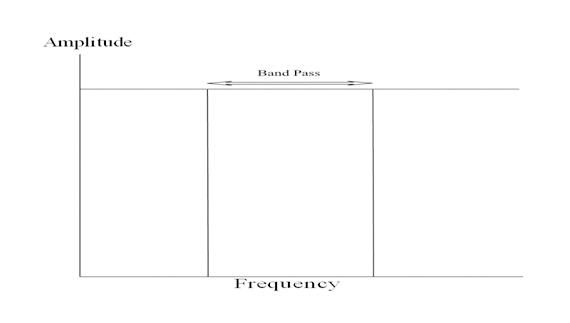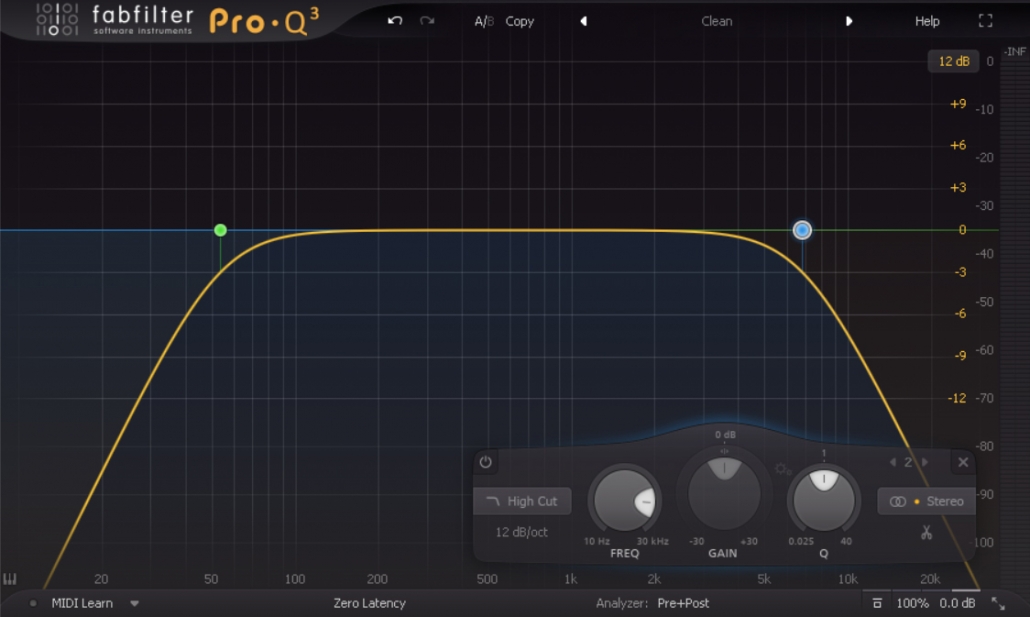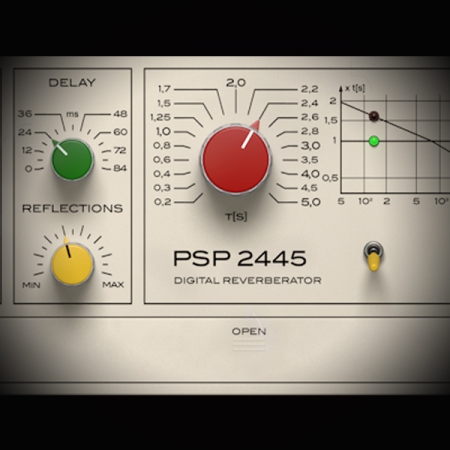Description
Band-pass Equalisation – Slopes and Gradients is a detailed video on the subject of equalisation with emphasis on the slopes and gradients used when adopting filter responses.
One of the most important processes in music production is that of using corrective equalisation to remove redundant and problematic frequencies from audio prior to mixing. We refer to this process as cleaning.
Filter circuits (such as low-pass filters, high-pass filters, band-pass filters, and band-reject filters) shape the frequency content of signals by allowing only certain frequencies to pass through. We are going to look at a filter circuit that uses both a high pass and low pass filters. The two together form what we in the industry term as a band-pass filter.
The type of equaliser filter I use for all cleaning tasks is a band-pass filter.
So, why band-pass? Because what we are trying to achieve is to remove low end frequencies that are not needed and high end frequencies that are also not needed (which many seem to ignore). These are called redundant frequencies. The frequencies we keep are the frequencies we are going to process.
In the image above you can see the redundant frequencies sitting at around 10 kHz. They are visible but cannot be heard. So, why keep them?
Band-pass filtering
I always start by inserting hi pass and low pass filters at either end of the spectrum. In effect I am using band-pass filtering/equalisation.
A filter that passes frequencies between two limits is known as a band-pass filter.
A band-pass filter attenuates frequencies below and above the cut-off and leaves the frequencies at the cut-off. It is, in effect, a low-pass and a hi-pass together. The cool thing about this filter is that you can eliminate the lower and higher frequencies and be left with a band of frequencies that you can then process without the worry of redundant frequencies creeping up on you and summing gains and tripping compressors.
A filter that adjusts the levels of frequencies between a pair of values is known as a peaking filter
Once I have the two filters in place I start to move them around until I have cut all the frequencies not needed.
Bandwidth – also known as Q
Bandwidth, in this context, is a simple measurement: it is the width of the frequency range selected. In other words, it is the range of frequencies allowed to pass through the equaliser. The width of a peaking filter is defined by its Q value, where Q is the filter frequency divided by the width in Hertz of the band the filter affects. A high value for Q corresponds to a very narrow filter, whereas a low value of Q corresponds to a wide filter.
Slope or Gradient
Filters do not have a no-effect at a frequency and then instantly jump and suddenly reappear at the next frequency. They have to get there somehow. The way, and by how much, they get there is called the gradient or slope. In the case of the shelving filter, the most common slope is 6 dB gain change per octave (doubling of the frequency). It takes time for the filter to attenuate frequencies, in proportion to the distance from the cut-off point. This is the slope.
When cleaning, the slope of the eq/filter is as important as to where you set your cut-off. They can be designed with varying degrees of steepness expressed in dBs/octave where the more dBs, per octave, the steeper the filter. I always extend an eq’s display to show a much broader range as this will invariably cover all the slopes. This then allows me to shape and match the eq slope to the response of the sound. This makes for a much smoother and accurate cut.
Let us take vocals as an example:
A drastic slope can be unnatural when filtering vocals whereas a smooth slope can help to get the vocals to sit more naturally in the mix. Again, this comes down to taste and subjectivity but there does come a time whereby the integrity of the signal will suffer and this is usually the time to back off. If a 24dB/octave slope is too drastic on vocals then back off and select a smoother slope, maybe 12dB/octave.
Target Frequency
The hardest part of using equalisation is to find the exact frequency you want to process and I have done my utmost in the Band-pass Equalisation – Slopes and Gradients video to show you how to locate and process the correct frequencies. There are processes in place that make this task easy to execute and one excellent trick is to use the band solo feature on the equaliser. Some well designed EQs will afford the user the ability to solo any eq node/band so that the specified frequency range can be heard in isolation. This is an extremely helpful aid and a technique I always use when it comes to using eq.
Lead In/Out
The lead-in and out are governed by the slope/gradient. Quite often we will allow some sounds to have a slow progression to and away from the cut-off. Lead-in allows frequencies below the cut-off to gently fade in based on what you select for the slope. The same process is applied but this time above the cut-off and we term this as lead out. Let me give you a simple example: if I am working on a vocal take I might want to cut everything below 200 Hz. If I place the eq node at 200 Hz and select a brickwall cut then almost everything is cut instantly below the cut-off value of 200 Hz. However, this type of aggressive cut using a very steep slope can be detrimental to the vocal take and a better approach might be to place the cut-off further up the spectrum, say 250 Hz, and use a gentler slope for the filter.
In the Band-pass Equalisation – Slopes and Gradients video I explain what a bandpass filter is, how it works and how best to use it for cleaning audio channels. I show you the industry techniques we use to clean any piece of audio. I explain slopes and gradients in detail and show you how to match the filter’s slope to the response/shape of the audio being processed. I end by using two processors to treat RnB female vocal take.
Plugins used in this video:
Topics covered in this video are:
- Filter Frequency Response and how to measure it
- Matching Filter Slopes for a Smooth and Clean Sound
- LP and HP Filtering and how they work
- Soloing bands in relation to the rest of the audio bandwidth
- Cleaning channels using band-pass techniques
- Redundant frequencies and how they can mar your mixes
If you found this video helpful maybe these will also be of benefit:
Band Pass Equalisation – cleaning audio channels
EQ Uncovered – (second edition)
Active, Passive, Graphic, Parametric, Fixed and Peaking Eqs
What is an equaliser and how does it work
Eq Filters and Slopes/Responses
Dynamic EQ – what is it and how do you use it
Linear Phase Eq versus Minimum Phase Eq














